Land Invertebrates
Media

Species Types
Scientific Name
Mecaphesa spp. and Misumessus spp.
Description
Foliage flower spiders are two genera of crab spiders. They are generally smaller than other crab spiders, and their carapaces, abdomens, and legs are spiny.
Media

Species Types
Scientific Name
More than 900 species in North America north of Mexico
Description
Millipedes, which have two pairs of legs per body segment, are harmless detritus-eaters, move slowly, and curl up defensively when harassed.
Media

Species Types
Scientific Name
About 6,500 species have been named so far, worldwide.
Description
Daddy longlegs, or harvestmen, are familiar Missouri animals. They are not spiders, but opilionids. Unlike spiders, they have a fused body form and lack silk and venom glands.
Media
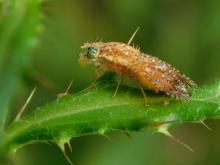
Species Types
Scientific Name
About 300 species in North America north of Mexico
Description
Tephretid fruit flies, in the family Tephritidae, are often called peacock flies for the intricately patterned, often brightly colored wings of many species.
Media
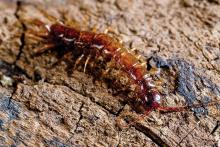
Species Types
Scientific Name
Hundreds of species in North America north of Mexico
Description
Centipedes are familiar to anyone who has overturned rocks and logs, sifted through leaf litter, or dug in the soil. Learn more about Missouri's members of class Chilopoda.
Media

Species Types
Scientific Name
Approx. 150 species of land snails and slugs in Missouri
Description
Most people know land snails and slugs when they see these interesting animals. Missouri has about 150 species in 25 families.
Media
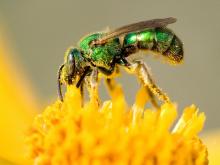
Species Types
Scientific Name
More than 500 species in North America north of Mexico
Description
Missouri has many species of halictid bees, or sweat bees. Some are solitary, but a number show different levels of social behavior. They're named for their attraction to perspiration, which offers them precious moisture and salts.
Media
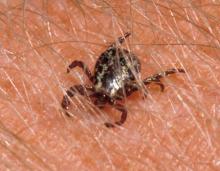
Species Types
Scientific Name
Three common Missouri species
Description
Ticks drink the blood of humans and other mammals. Because they can carry serious, sometimes deadly diseases, it's important to learn about ticks and how to protect yourself from their bites.
Media
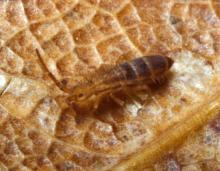
Species Types
Scientific Name
More than 8,000 species globally
Description
Springtails, like insects, have six legs, but these tiny rounded, oval, or elongated creatures that hop quickly into the air are not insects. They have a separate lineage and many structural differences.
Media

Species Types
Scientific Name
Trombicula alfreddugesi and other Trombicula spp. (syn. Eutrombicula)
Description
The worst thing about Missouri summers is chiggers. They are nearly invisible but leave itchy red welts. Avoid their habitat areas, especially after noon.
See Also



Media

Species Types
Scientific Name
Cisseps fulvicollis
Description
The yellow-collared scape moth is more often “orange-collared.” And whether you think it looks more like a firefly or a wasp, it’s still a moth!
Media

Species Types
Scientific Name
Nearly 150 species in North America north of Mexico
Description
Slim, delicate plume moths are instantly recognizable by their T-shaped silhouette, long legs, and muted shades of tan and brown. It can be hard to separate the various species.
Media

Species Types
Scientific Name
Pyrrharctia isabella
Description
Not many people know the adult Isabella tiger moth when they see one, but we’re all acquainted with its caterpillar, the woolly worm, or woolly bear.
About Land Invertebrates in Missouri
Invertebrates are animals without backbones, including earthworms, slugs, snails, and arthropods. Arthropods—invertebrates with “jointed legs” — are a group of invertebrates that includes crayfish, shrimp, millipedes, centipedes, mites, spiders, and insects. There may be as many as 10 million species of insects alive on earth today, and they probably constitute more than 90 percent all animal species.





















